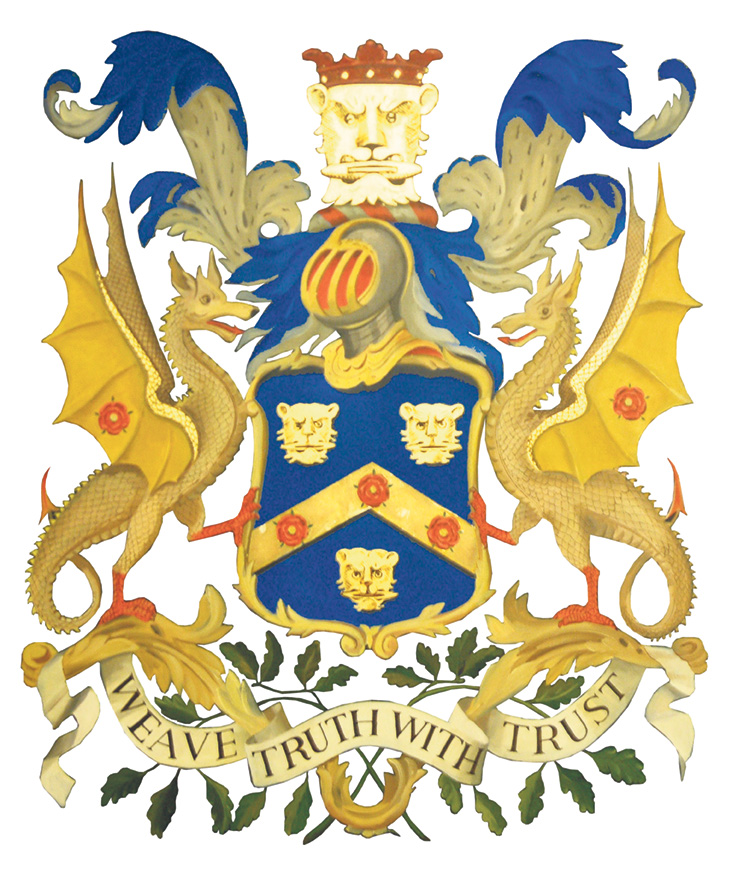1539 INSPEXIMUS OF HENRY VIII
1556 INSPEXIMUS OF PHILIP & MARY
1559 INSPEXIMUS OF ELIZABETH I
1588 Spanish Armada

1539 INSPEXIMUS OF HENRY VIII
1556 INSPEXIMUS OF PHILIP & MARY
1559 INSPEXIMUS OF ELIZABETH I
1588 Spanish Armada
Livery
It was the custom for all members of the Guild to appear in livery at Guild functions and on public occasions, such as great processions through the City. Originally the term “livery” described an allowance of food and clothing (granted to his household by a nobleman or bishop) but it had come to mean simply distinctive clothing. In the prologue to the Canterbury Tales, Chaucer, writing in the fourteenth century, described:
A Haberdasher, a Dyer, a Carpenter,
A Weaver and a Carpet‑maker were
Among our ranks, all in the livery
of one impressive guild fraternity.
However, as time passed, the wearing of livery became the privilege of the senior members of the Companies, such as the masters of the craft who could sustain the expense and responsibility for running the Company. Thus by the beginning of the sixteenth century these formed the Livery of the Weavers’ Company, distinct from the mass of members who benefited from the protection of membership and their status as Freemen but had no powers or privileges. The Ordinances of 1577 specified that the government of the Company should consist of two Bailiffs, two Wardens and a Court of 12 Assistants. The Court of Assistants chose the Clerk and the Beadle and formulated general rules for the government of the craft. They selected the Livery from among the general body of Freemen.
Protestant Immigrants
In the early years of the sixteenth century the Weavers’ Company was in financial straits. Under Henry VIII difficulties over payment of the ferm were so severe that the King agreed to take a lower rate, it being recognised, at last, that the Company no longer enjoyed the extraordinary power which had justified the original heavy tax. This helped to alleviate its problems and it became more prosperous. However, it now had to cope with the new influx of foreign workers, Protestants fleeing from persecution on the continent. These were silk workers, bringing with them new skills, and although there was natural resistance to foreign competition the stimulus to trade given by the new materials led to greater prosperity. Londoners took up silk weaving and many foreign weavers were absorbed into the Company.
Weavers’ Hall
In the second half of the sixteenth century the Company’s finances had so far improved that it was able to undertake the building of a hall. It had owned property in Basinghall Street since the fourteenth century, but the existing buildings were now pulled down and an entirely new hall built. From this headquarters it carried out its craft and charitable functions. The Weavers’ Company also had a vital role to play in the affairs of the City, with contributions to charitable causes in times of need, and to loans and subsidies to the King. It contributed to the defence of the realm, for which it kept a stock of gunpowder and of arms. In war time it would send a contingent of men to fight in the King’s army. The Liverymen voted in Common Hall at the elections of the Lord Mayor and the Sheriffs and also for the City’s Members of Parliament. They played their part in the City pageantry with lavish feasting and displays on the Lord Mayor’s Day and on the occasion of royal visits.

Copyright © 2025 The Weavers' Company. All Rights Reserved.